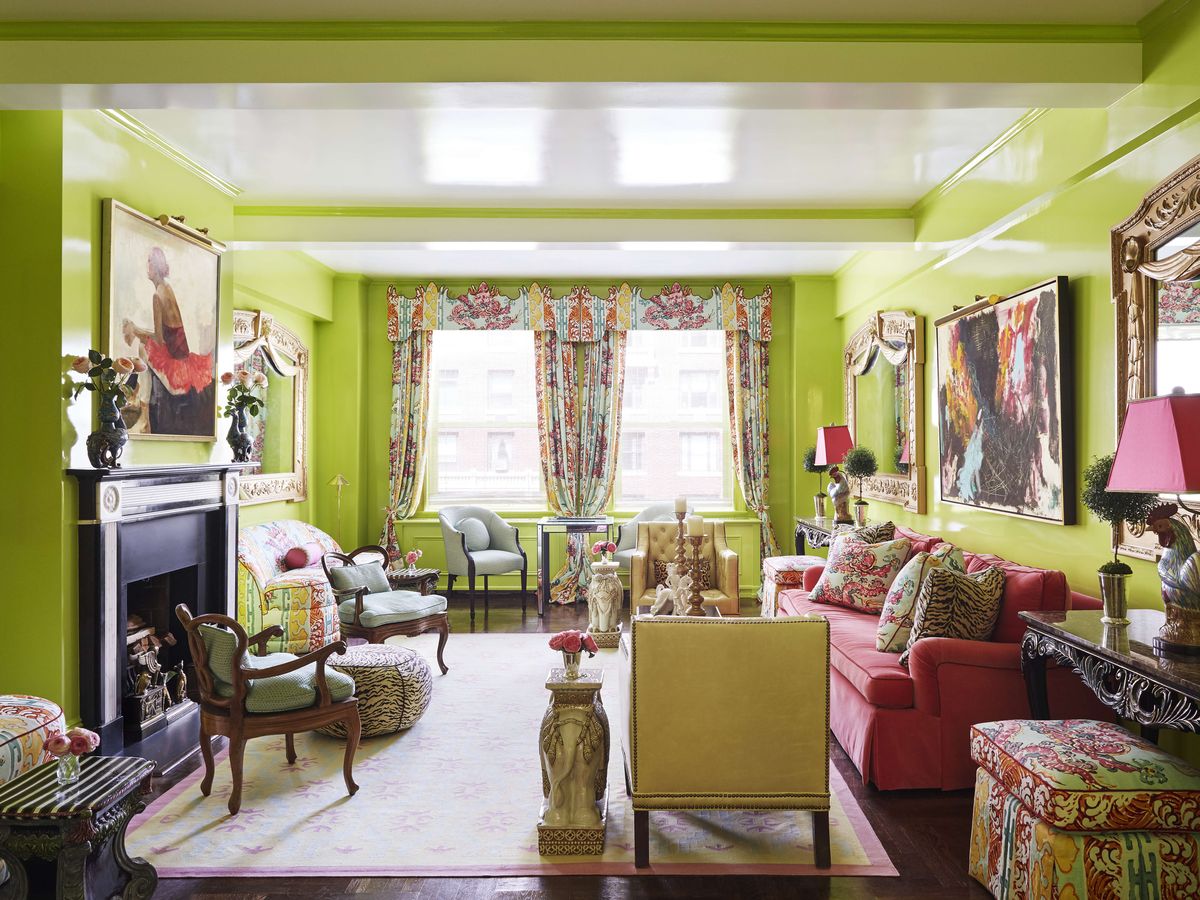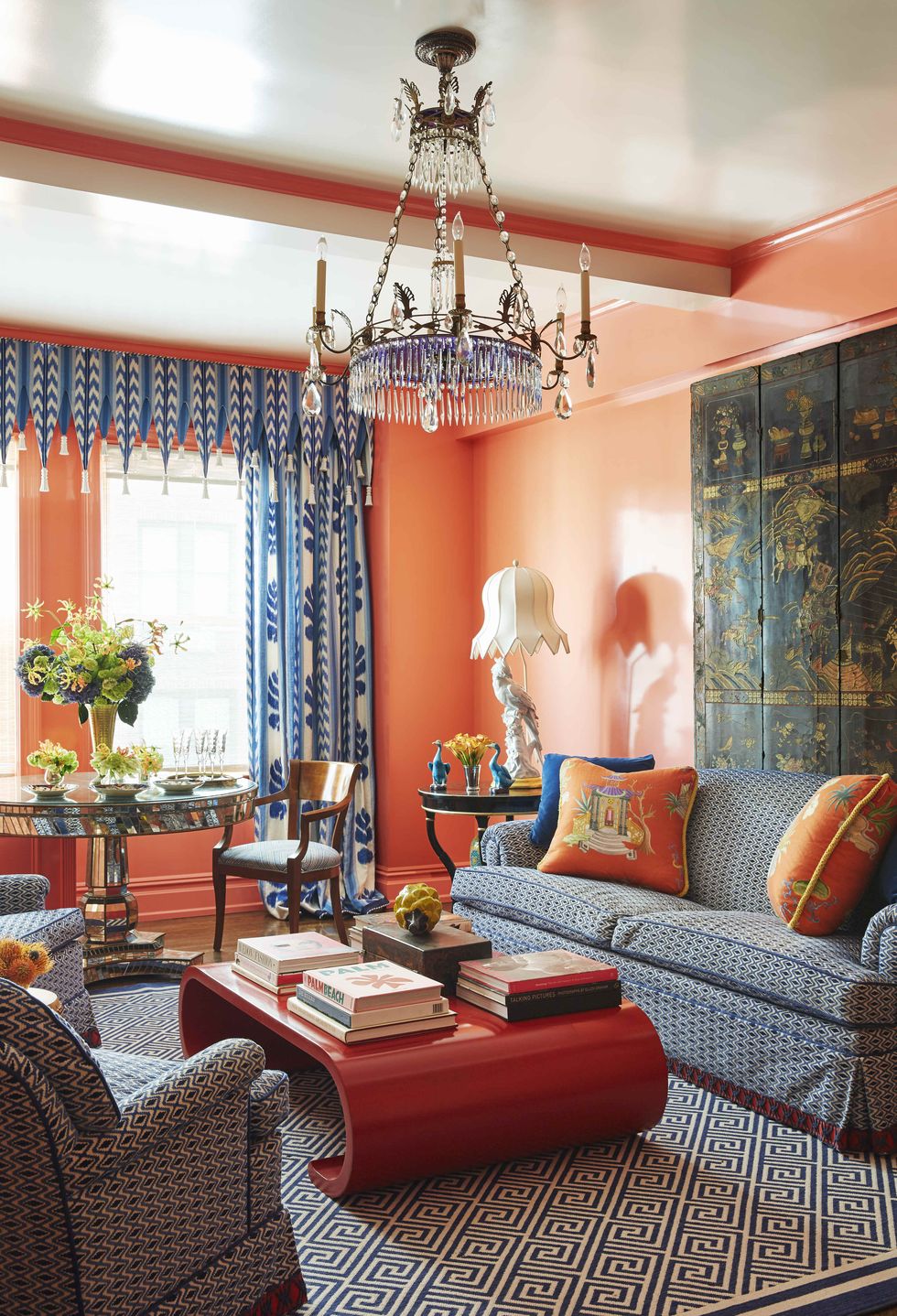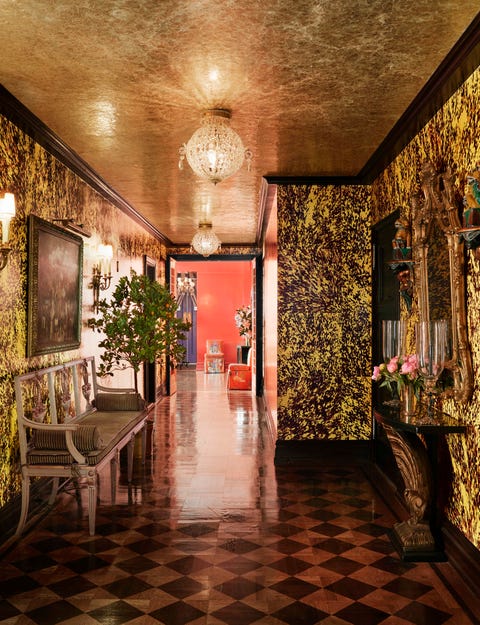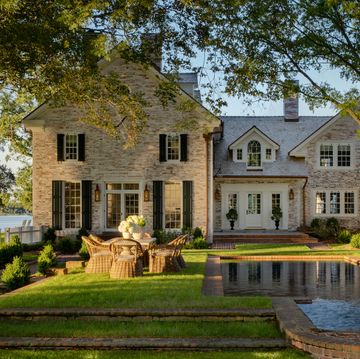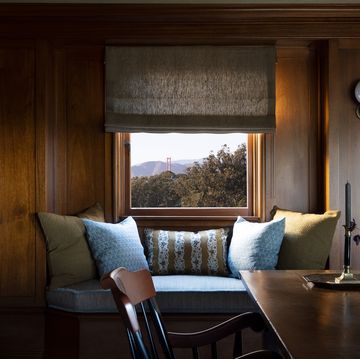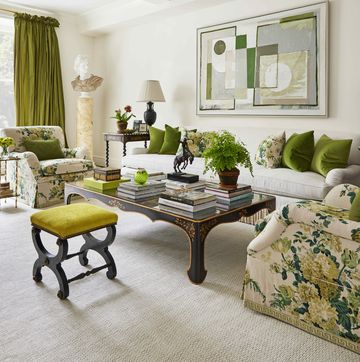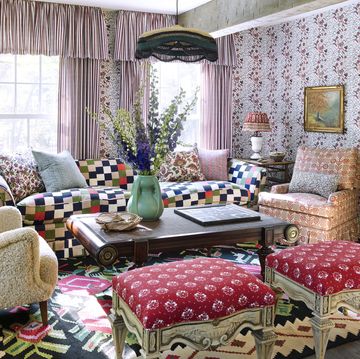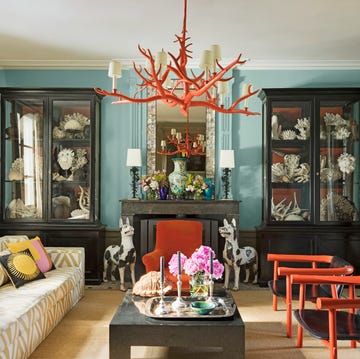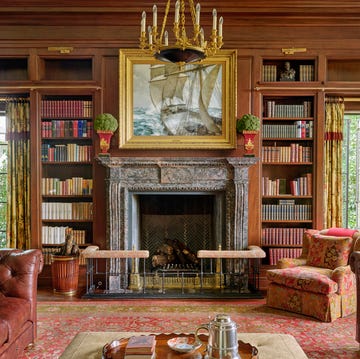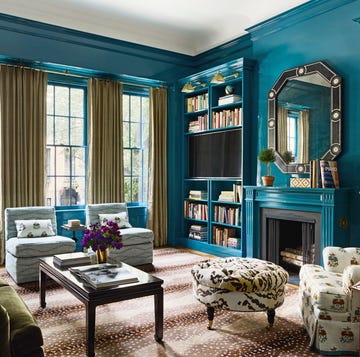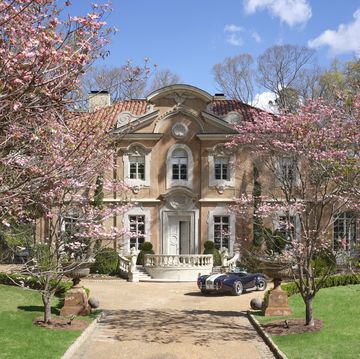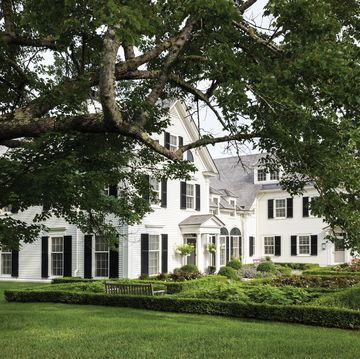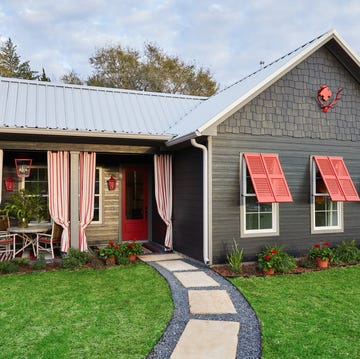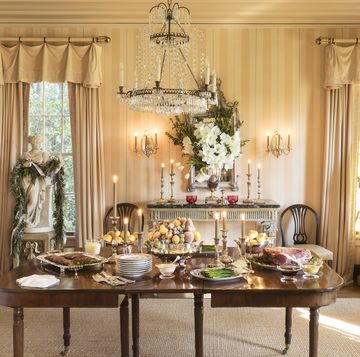In New York, you need color, you need light, you need a reflection of the people who live there. To Chiqui Woolworth, the city’s marvels of stacked geometry, the inner worlds hidden behind windows above busy avenues and side streets, call for bold, highly personal decoration. Homogeneity? She’s never heard of it.
“I am a color girl, that’s the Cuban blood,” laughs the interior designer, who spent her early childhood traveling between the Technicolor streets of Havana where her mother’s family lived and her native New Orleans. There wasn’t a “safe neutral” within a hundred miles of her upbringing. Today, her lineage still blazes a path of color bravado, though some credit must go to a pair of decorating heavyweights who entered her circle in New York (more on them in a moment).
The owners of this classic eight on Park Avenue are Alexandra Lind Rose and Louis Rose: she, a clothing designer who spun her sartorial vision into World Armarium, a styling and rental business she co-owns; he, a noted restorer of old New York buildings and developer of some of the city’s most well-known restaurant and event venues (Cipriani, Rainbow Room, and 583 Park Avenue among them). Neither shy from risk or revelry and are longtime friends of Woolworth’s.
More From Veranda

“I met Chiqui 25 years ago at a party,” says Louis, adding that their convivial history created a language of sorts for their design projects together. High-octane entrances, conversational seating, lively embellishments that light up spaces like animated party guests...One can almost imagine rooms under their vision dressing for dinner.
In fact, one of the first decisions the three made upon the couple’s acquisition of the prewar apartment was to turn a closet off the entry hall into a powder room for guests. “And we did away with a formal dining room in favor of a library so we could create seating for parties,” says Louis. They prefer more casual, buffet-style settings, adds Alexandra, “where guests can sit and get comfortable. It fits us better.”
A glossy salmon backdrop doesn’t hurt. In this reimagined dining room, light from a vintage Russian chandelier bounces off vivid lacquered walls and a round mirrored table that morphs from every-night dining spot (and homework desk for the couple’s daughter, Kingsley [12]) to a shimmering buffet. A red Karl Springer coffee table, which Woolworth “chased for years,” is a regal centerpiece. Even the draperies are festooned with a sense of occasion as carnivalesque tassels hang from a triangular-cut window valance, both fanciful hints at the designer’s early influences.
Before Woolworth became a decorator, she had one of her own. Mario Buatta decorated her former residence on Fifth Avenue and became a longtime mentor and friend. Another is the equally theatrical Tom Britt, who is “the drama in my life and my best friend,” she says of the venerable designer, whose confident flourish (and lavish good taste) leaves an indelible mark on Woolworth’s work.
She believes in the power of a good foyer, “the most important room,” and deftly mixes antiques and art of any era. In the living room, contemporary paintings are flanked by a quartet of gilded neoclassical mirrors that once hung in the Pierre hotel; Chinese elephants stalk sexy Italian armchairs. And, like Britt and Buatta, she never shies from a tented room. “I’ve always been mesmerized by them,” says Woolworth, who turned to her imaginative slate of decorative finishes to “tent” a small bar alcove adjacent to the library with a pair of faux blue-and-white-striped curtains that tie back from swinging doors to the kitchen. “It’s one more layer, one more surprise.”
And if it fits the individuality of the owners, it fits. “Ninety-five percent of the time, it’s just us,” says Louis. “The colors, the furnishings, they’re very reflective of our family.” Alexandra agrees, adding that it’s just the sort of uplifting environment that defines their style. “All three of us like to take risks, and Chiqui does this with balance and restraint.” She points to the foyer’s scene-stealing tortoiseshell walls as a testament to her beautiful equilibrium. “It perfectly divides the lacquered green living room and salmon library. It’s a brilliant centerpiece.”
Like any entry hall worth its square footage, it offers a potent glimpse at what’s to come. “When they have parties, the whole place just sings,” says Woolworth. “The flowers become fancy, the servers come through all dressed up, the Russian chandelier sparkles. It’s magical.”
This feature originally appeared in the November/December 2020 issue of VERANDA. Interior Design by Chiqui Woolworth; photography by Annie Schlechter; produced by Dayle Wood; florals by Buunch ; written by Ellen McGauley.
